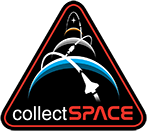 advertisements advertisements
|

|
Columbia Learning Center to expand access to shuttle tragedy debris
September 15, 2025 — NASA is changing the way that its employees come in contact with and remember one of its worst tragedies.
In the wake of the 2003 loss of the space shuttle Columbia and its STS-107 crew, NASA created a program to use the orbiter's debris for research and education. Agency employees were invited to see what remained of the space shuttle as a powerful reminder as to why they had to be diligent in their work. Access to the Columbia Research and Preservation Office, though, was limited as a result of its location and related logistics.
To address that and open up the experience to more of the workforce at Kennedy, the agency has quietly begun work to establish a new facility.
"The room, titled Columbia Learning Center (CLC), is a whole new concept," a NASA spokesperson wrote in an email, responding to an inquiry from collectSPACE. "There are no access requirements; anyone at NASA Kennedy can go in any day of the week and stay as long as they like. The CLC will be available whenever employees need the inspiration and message for generations to come."
Debris depository
On Feb. 1, 2003, Columbia was making its way back from a 16-day science mission in Earth orbit when damage that it suffered during its launch resulted in the orbiter breaking apart over East Texas. Instead of landing at Kennedy as planned, Columbia fell to the ground in more than 85,000 thousand pieces.
The tragedy claimed the lives of commander Rick Husband, pilot Willie McCool, mission specialists David Brown, Kalpana Chawla, Michael Anderson and Laurel Clark and payload specialist Ilan Ramon of Israel.
Initially, the debris that was found was transported and brought into a hangar at Kennedy, where it was laid out based on where it had been part of the shuttle. After the investigation into what caused the disaster was complete, NASA established the Columbia Research and Preservation Office on the 16th floor of the Vehicle Assembly Building (VAB), the voluminous facility that was used to assemble the space shuttles for launch.
The vault-like room with its large steel access doors held all of the recovered pieces — about 40 percent of the total orbiter — and was a departure from what NASA had done after its previous spaceflight disasters. Whereas previously what remained of the Apollo 1 command module and space shuttle Challenger was stored out of sight, researchers could request parts from Columbia for study and employees were invited to see the wreckage through tours pre-arranged by the Apollo, Challenger, Columbia Lessons Learned Program.
The press was allowed into the VAB archive only once, one year after the tragedy, when it was described as "Columbia's final resting place."
Learning center
Most of the debris is remaining where it is, although there will be no more tours offered of that repository.
"The old Columbia room in the restricted-access Vehicle Assembly Building will become a long-term storage room for artifacts," said the NASA spokesperson, citing the NASA officials who are leading the transition as part of the agency's Safety and Mission Assurance Mishap Prevention Program, under which the Apollo, Challenger, Columbia Lessons Learned Program is has been folded.
The new Columbia Learning Center, to be located on the first floor of Kennedy Space Center's Operations Support Building 1 (OSB-1), will be divided into three areas.
"The new space will begin with a short movie, then a gallery exhibition of Columbia artifacts and finally a learning area with multimedia stations that speak to the accidents, lessons learned and training tools to help mitigate future accidents," the NASA representative wrote.
Planning is now underway as to what specific pieces of Columbia will fit and be placed into the learning center. Among the objects under consideration are some items from the orbiter's crew cabin that were previously shared with the workforce.
Construction of the new space in OSB-1 is expected to be complete by Oct. 1, at which point outfitting of the room will begin. The Columbia Learning Center is targeted to open to employees in January.
Forever remembered
Access to the new Columbia Learning Center will be strictly limited to badged employees. No public access is planned.
"The public can continue to learn about the mission at the Kennedy Space Center Visitor Complex's 'Forever Remembered' exhibit," NASA's spokesperson told collectSPACE.
Opened in 2015 inside the building displaying the retired space shuttle Atlantis, "Forever Remembered" exhibits the forward window frames from Columbia and a segment of the fuselage of Challenger, along with mementos associated with all 14 fallen astronauts from the two space shuttle tragedies.
Separately, Kennedy Space Center Visitor Complex also displays the hatches from the Apollo 1 command module that prevented three astronauts from escaping a fire in the capsule during a 1967 test on the launch pad.
The changes to the Columbia Research and Preservation Office and Apollo, Challenger, Columbia Lessons Learned Program do not alter the legal status of the recovered artifacts from each tragedy, which remain property of the U.S. government regardless of where they are located. Any debris still found today should be reported to to the NASA Safety Center. |
|
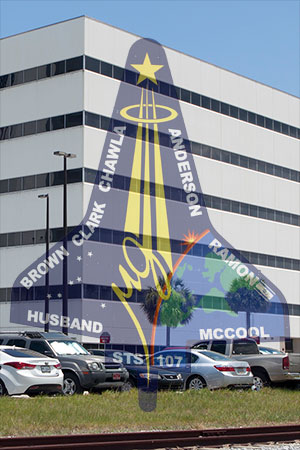
Operations Support Building 1 (OSB-1) at Kennedy Space Center in Florida will be home to the new Columbia Learning Center, replacing tours of the Columbia Research and Preservation Office in the Vehicle Assembly Building. (NASA/Dimitri Gerondidakis / cS)

The new Columbia Learning Center at Kennedy Space Center will be divided into three areas: a pre-show area where a short movie will be screened; an exhibit area with recovered artifacts from the fallen space shuttle Columbia; and a learning area with multimedia displays to help mitigate future accidents. (NASA via collectSPACE)
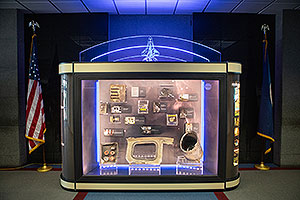
NASA previously toured with a selection of space shuttle Columbia recovered artifacts, bringing them to each of its 10 facilities across the nation to educate and inspire its workforce. (NASA/Kim Shiflett)
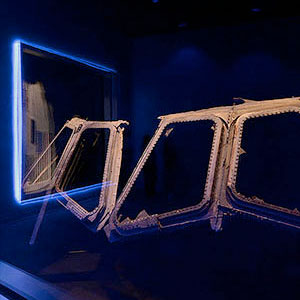
The flight deck windows recovered from space shuttle Columbia are displayed as part of "Forever Remembered." (collectSPACE) |
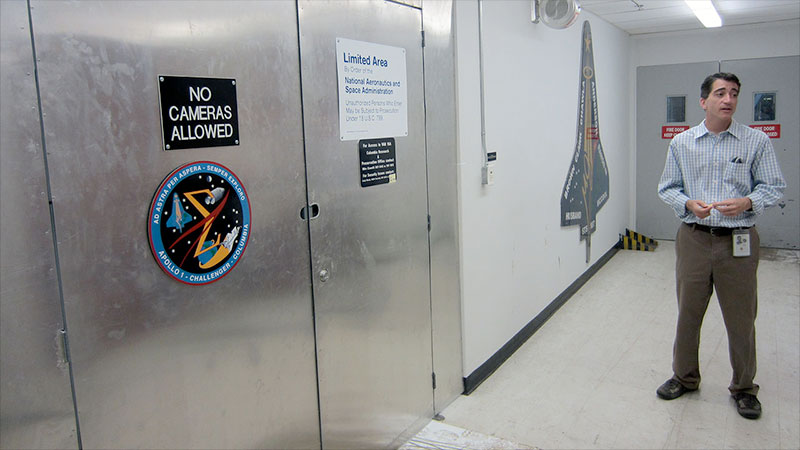
Michael Ciannilli, the former manager of NASA's Apollo, Challenger, Columbia Lessons Learned Program, at the Columbia Preservation Office on the 16th floor of the Vehicle Assembly Building at Kennedy Space Center in Florida. (Jonathan Ward/Bringing Columbia Home) |
|

© collectSPACE. All rights reserved.
|
|

|

|
